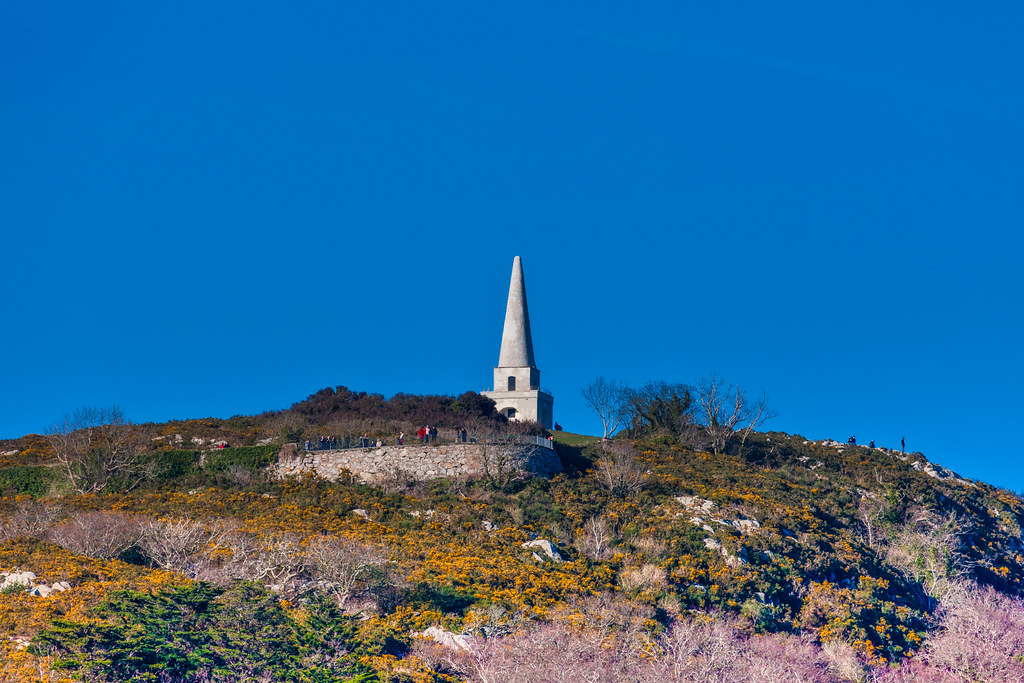KILLINEY OBELISK - A FAMINE MEMORIAL
THE KILLINEY OBELISK [1740-1741] FAMINE MEMORIAL - THE YEAR OF THE SLAUGHTER]
The Killiney Obelisk is located on Killiney Hill. It was commissioned by John Malpas (a wealthy Catholic) in response to the famine of 1740 and 1741.
The Obelisk bears the inscription: "Last year being hard with the poor, walks about these hills and this were erected by John Mapas, June 1742."
The Irish Famine of 1740–1741 (The Year of Slaughter), was estimated to have killed at least 38% of the 1740 population of 2.4 million people, a proportionately greater loss than during the worst years of the Great Famine of 1845–1852.
The famine of 1740–41 was due to extremely cold and then rainy weather in successive years, resulting in food losses in three categories: a series of poor grain harvests, a shortage of milk, and frost damage to potatoes. At this time, grains, particularly oats, were more important than potatoes as staples in the diet of most workers.
Deaths from mass starvation in 1740–41 were compounded by an outbreak of fatal diseases. The cold and its effects extended across Europe, but mortality was higher in Ireland because both grain and potatoes failed. This is now considered by scholars to be the last serious cold period at the end of the Little Ice Age of about 1400–1800.
By the mid-19th century's better-known Great Famine of 1845–1852, potatoes made up a greater portion of the Irish diets, with adverse consequences when the crops failed. This famine differed by "cause, scale and timing:" it was caused by an oomycete infection which destroyed much of the potato crop for several years running. The crisis was exacerbated by insufficient relief and extreme government regulations.

KILLINEY OBELISK - A FAMINE MEMORIAL 001

KILLINEY OBELISK - A FAMINE MEMORIAL 002

KILLINEY OBELISK - A FAMINE MEMORIAL 003
You will find links to buy products from Amazon, Google and other partners. If you click on these links, you’ll find that the URL includes a small extra piece of text which identifies that the click came from my websites. This text is an affiliate code, and it means that I get a small percentage of the money you spend if you choose to buy that product, or, in some cases, other products from the site soon after. These affiliate links help pay the costs of producing my websites and ensure that the content is free to you.
COPYRIGHT INFORMATION BELOW APPLIES ONLY TO PHOTOGRAPHS

This work by William Murphy aka Infomatique is licensed under a Creative Commons Attribution-NonCommercial-ShareAlike 4.0 International License.
Permissions beyond the scope of this license may be available at https://excellentstreetimages.com/in-the-year-twentytwenty/copyright/.
